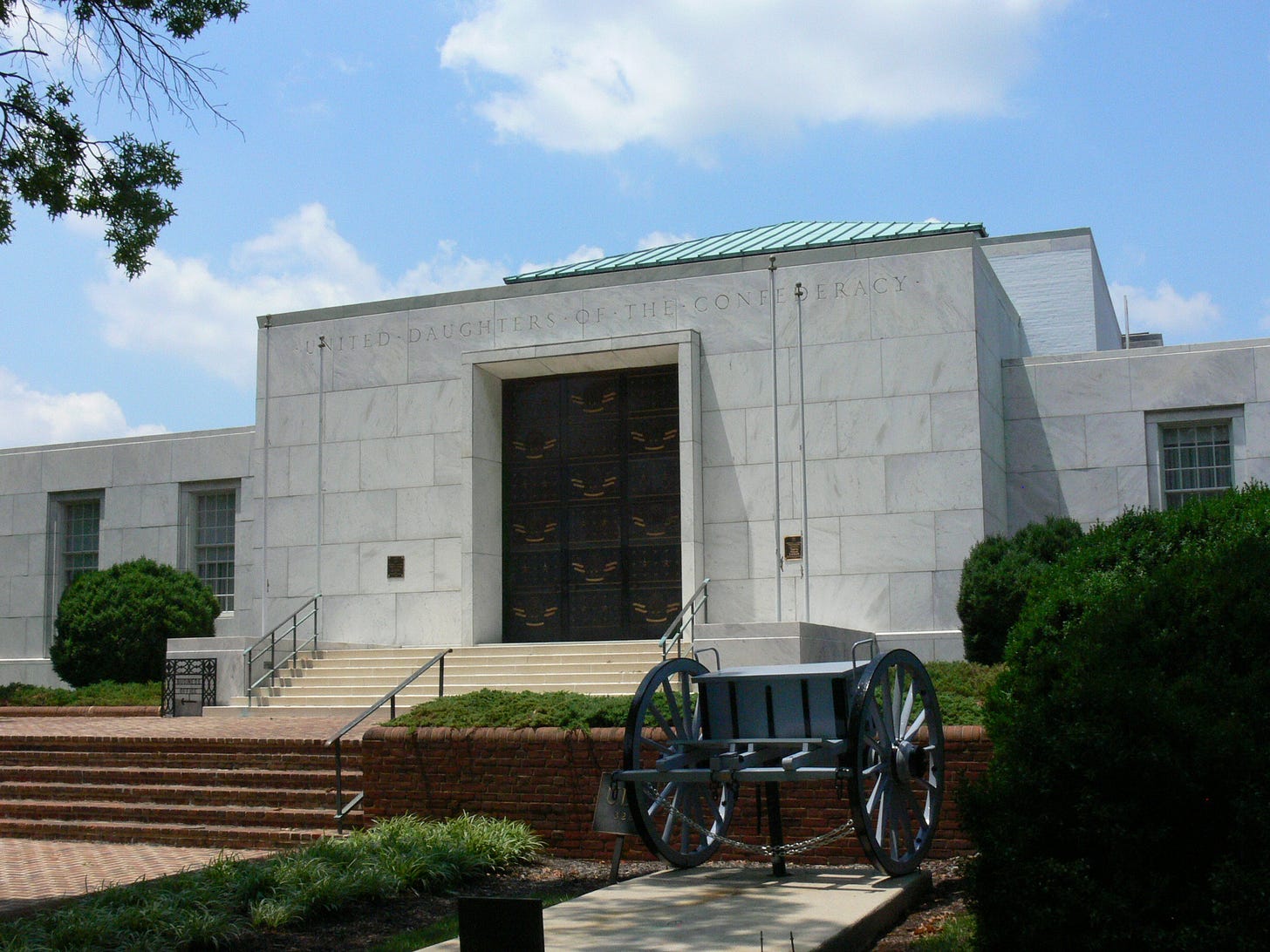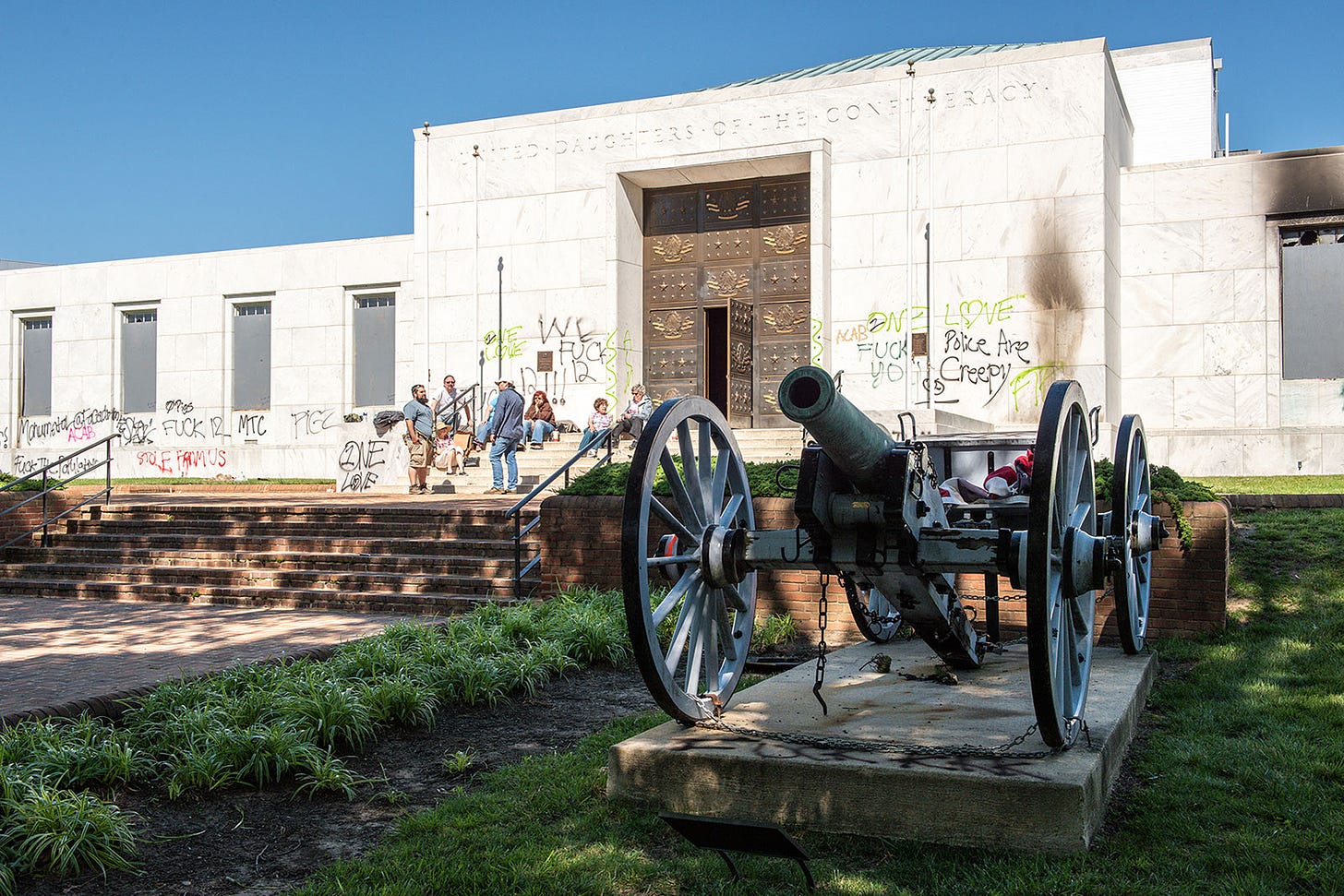Last week the Virginia Senate approved a bill that would remove the tax-exempt status of the United Daughters of the Confederacy in Richmond, Virginia. The House had already passed a similar vote. Even if the two pieces of legislation can be reconciled it is not at all clear whether Gov. Youngkin will veto it. If he does, it is unlikely that Democrats will be able to gain enough votes to override a veto.
According to The Washington Post:
The bills involve sections of state code that deal with taxes related to real estate. In the law, the UDC is the only specific special-interest group exempted from deed recordation taxes, along with the broader categories of churches; federal, state and local governments; nonprofit hospitals; and corporations making internal property transfers. The UDC also is exempted from real estate and property taxes, part of a long list of carve-outs that also includes local historic preservation groups, the Future Farmers of America, the American Legion, several local fine arts groups and more.
That a bill has managed to move this far through the legislative process suggests it is just a matter of time before this final monument to the Confederacy in its former capital is removed or significantly transformed. Losing this special status may force the UDC to abandon its national headquarters, located on N. Arthur Ashe Boulevard.
You may recall that back in the summer of 2020, the building suffered external damage during the protests that followed the police murder of George Floyd, but beyond that you probably haven’t heard much from the UDC in recent years.
And that’s just how they like it.
In contrast with the Sons of Confederate Veterans which has steadily embraced a far right-wing/white nationalist agenda, the UDC has remained relatively quiet, focusing on student scholarships and other forms of public outreach.
According to the UDC’s website:
Erected by the United Daughters of the Confederacy, this Memorial Building and Great Hall was affectionately dedicated November 11, 1957, in Richmond, Virginia, to the Women of the South and to the women of the Confederate States of America for their loyal devotion, self-sacrifice, adaptability to new tasks, constancy of purpose, exemplary faith in never changing principles. In these qualities reposes the memory of the women of the Confederacy.
Let’s be clear. The UDC does not promote sound history education. They are not operating anything like a professional museum. There is little attempt to engage the public through tours and I know of only a few scholars that have been granted access to their archival collection.
If you enjoy my commentary here make sure to join the Civil War Memory chat room. I regularly post and comment on the latest Civil War news and other items of interest. Everyone can comment. Paid subscribers can start their own chat threads.
As their website makes clear, the UDC was founded and continues to operate exclusively to celebrate and memorialize the Confederacy and the individuals who fought for it. The UDC has every right to do so, but not on the financial backs of Virginia’s taxpayers.
It is worth noting that this legislation was initiated by a Virginia high school student as was the legislation in Charlottesville calling for the removal of the Robert E. Lee monument. Both cases point to the dramatic shift in the understanding of the history of the Civil War and the Confederacy among Black and white Virginians.
If the leaders of the UDC believe that they are entitled to tax-exempt status, let them make the case for it. Their silence will most certainly guarantee the continued encroachment on a status that was granted decades ago, when the Lost Cause narrative was reflected in the power structure of the city and state government.







From a Virginian: Thanks for this informative, important posting.
Re "the dramatic shift in the understanding of the history of the Civil War and the Confederacy among Black and white Virginians": Amen, and please have a look at the centerpiece for an illustrative story about that dramatic shift:
https://upload.wikimedia.org/wikipedia/commons/2/24/Jefferson_Davis_archway_Fort_Monroe_VA1.jpg
The UDC perped that obscene arch at Fort Monroe. It was finally removed in 2019. They perped it in the late 50s on what was then still Army property, during Virginia's Massive Resistance to school integration (when my elementary school, Granby in Norfolk, was closed for a time rather than integrate).
The slope in the photo leads to the top of the earthen-topped ramparts of the magnificent, moated stone citadel within Fort Monroe--the now-retired Army post that actually comprises all of Point Comfort, the 1619 arrival place of the first captive Africans. You can circumnavigate the entire stone citadel by walking that elevated lawn. Here's a photo of the retired post overall:
https://norfolkhistoricalsociety.wildapricot.org/resources/Pictures/Aerial.jpg
The slope in the first picture leads up to the citadel rampart shown at the 5 o'clock position on the stone citadel, as seen in the second. From there, straight ahead, you can see the Atlantic Ocean in the distance. Nearby is the towering flagpole with Old Glory flying, visible to ships entering the bay from the ocean. To your right is the entrance to Hampton Roads harbor.
Old Point Comfort was first fortified in 1609 because it guards the lower Chesapeake. It's inherently historic because it's inherently strategic as the Chesapeake Bay's flat Gibraltar.
But here's why the UDC's placement of that arch was obscene. Those first captive Africans arrived at Point Comfort in 1619, the start of slavery in British North America. The first successful self-emancipators arrived at Fort Monroe in May 1861--the start of the crumbling of U.S. slavery once Union soldiers began sacrificing and making freedom possible. Aside from that little piece of elevated lawn, no place in America affords a better view of so many dimensions of Fort Monroe's quarter-millennium-long arc of freedom. That arc was long, but it bent toward abolition of the Confederacy's cornerstone abomination.
The dramatic shift was slow in this case, as in many others. A few months before the 1619-2019 quadricentennial, somebody belatedly realized that the obscenity of the UDC's Jefferson Davis arch would draw international attention during the August commemoration at Fort Monroe. It was out of place enormously--and obscenely. (Have I overused that word? No.)
Politicians scrambled to get permission to remove the arch, and they got it removed in time.
There's actually a lot more to this story. I'll eventually do a posting on it.
Thanks for bringing up the UDC and the dramatic shift, and thanks for indulging this.
Thank you for the great write up. Much appreciated.